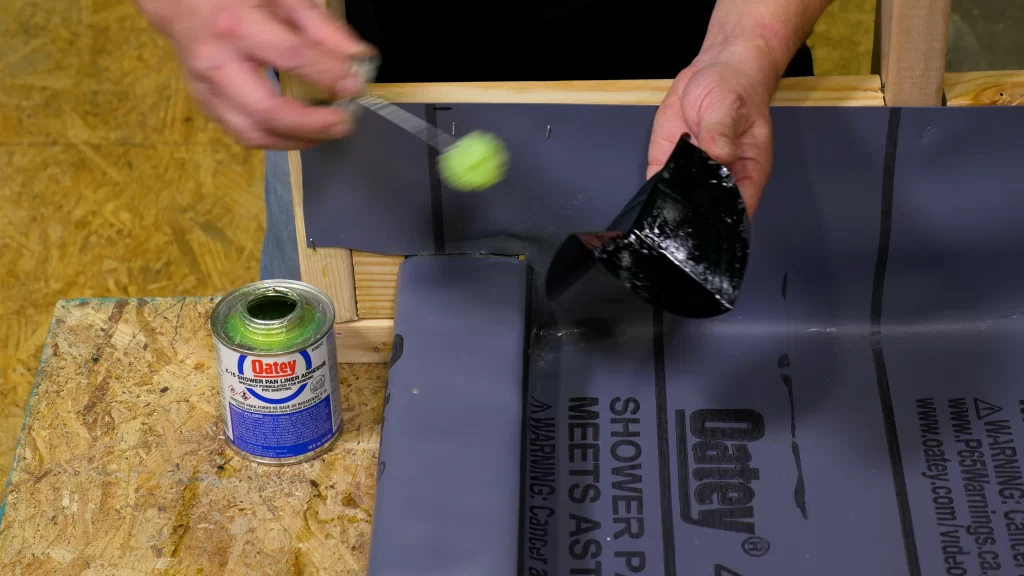How To Install Shower Pan Liner And Mortar

How to Install a Shower Pan Liner and Mortar: A Comprehensive Guide
Installing a shower pan liner and mortar is a crucial step in creating a watertight and sturdy base for your shower. Whether you’re remodeling your bathroom or building a new one, understanding the process of installing a shower pan liner and mortar is essential. In this comprehensive guide, we will walk you through the step-by-step instructions, share valuable tips, and answer ten frequently asked questions to ensure your shower remains leak-free and durable for years to come.
1. Importance of a Shower Pan Liner and Mortar
Preventing Water Damage
A shower pan liner and mortar provide a crucial waterproof barrier that prevents water from seeping into the subfloor and walls, which can lead to structural damage, mold growth, and costly repairs.
Ensuring Structural Integrity
A well-installed shower pan liner and mortar bed support the weight of the tiles and distribute it evenly, ensuring the structural integrity of your shower floor.
Complying with Building Codes
Many building codes require the installation of a shower pan liner and mortar to meet waterproofing and safety standards. Failing to adhere to these codes can result in construction violations and delays.
2. Gathering the Necessary Tools and Materials
Tools Required
- Utility knife
- Measuring tape
- Screwdriver
- Trowel
- Bucket
- Paintbrush
- Spirit level
- Safety glasses
- Gloves
- Mask
Materials Needed
- Shower pan liner (PVC or CPE)
- Waterproof adhesive
- Nails or screws
- Mortar mix
- Drain assembly
- Gravel or pea gravel
- Tile backer board
- Thinset mortar
- Tile spacers
- Tiles
- Grout
- Tile sealer
3. Preparing the Subfloor
Subfloor Inspection
Examine the subfloor for any damage, rot, or unevenness. Repair or replace damaged areas and ensure the subfloor is level and clean.
Subfloor Leveling and Cleaning
Use a spirit level to check for any slopes in the subfloor, and correct them as needed. Ensure the subfloor is free of debris and dust before proceeding with installation.
4. Installing the Shower Pan Liner
Laying the Liner
Unroll the shower pan liner and lay it over the subfloor, extending it up the walls by a few inches. Trim the excess liner using a utility knife, leaving enough material to cover the walls and curb.
Securing the Liner
Attach the liner to the subfloor using waterproof adhesive, nails, or screws, depending on your liner type and subfloor material. Be sure to secure the liner around the drain opening.
Sealing Joints and Corners
Use waterproofing sealant to seal all joints, corners, and seams of the liner. Pay special attention to the corners where the walls meet the floor and around the drain.
5. Creating the Mortar Bed
Mixing Mortar
Mix mortar according to the manufacturer’s instructions. It should have a consistency similar to peanut butter.
Applying Mortar
Spread the mortar evenly over the shower pan liner, starting from the drain and working your way towards the walls. Ensure the mortar is sloped gently towards the drain for proper drainage.
Sloping for Proper Drainage
To create the slope, use a screed board or a trowel with notches. The slope should be around 1/4 inch per foot towards the drain.
6. Installing the Drain Assembly
Assembling and Installing the Drain
Follow the manufacturer’s instructions to assemble and install the shower drain. Ensure it is flush with the mortar bed.
Securing the Drain Flange
Attach the drain flange securely to the drainpipe. Make sure there is a watertight connection to prevent leaks.
7. Testing for Leaks and Inspecting the Installation
Water Leak Test
Fill the shower pan with water to check for leaks. Allow the water to sit for at least 24 hours, monitoring for any signs of moisture or leaks in the surrounding area.
Inspection for Flaws
Thoroughly inspect the entire installation, including the liner, mortar bed, curb, and drain. Address any flaws or areas of concern before proceeding with tiling.
8. Tiling Over the Shower Pan Liner and Mortar
Preparing for Tile Installation
Install tile backer board over the mortar bed using screws and apply a waterproofing membrane over the backer board to ensure a watertight seal.
Applying Thinset and Setting Tiles
Mix thinset mortar according to the manufacturer’s instructions and apply it to the backer board using a trowel. Set your tiles in the thinset, using tile spacers to maintain proper spacing.
9. Grouting and Sealing
Grouting Between Tiles
Once the tile adhesive has dried, apply grout between the tiles. Ensure all gaps are filled, and wipe away excess grout with a damp sponge.
Sealing the Grout
After the grout has cured, apply a quality grout sealer to protect against moisture penetration and staining. Follow the manufacturer’s recommendations for application.
10. Common Installation Issues and Solutions
Dealing with Leaks
If you discover leaks during the water test or encounter drainage issues, it may be necessary to inspect and repair the drain assembly or liner sealing.
Repairing Damaged Liner or Mortar
If the shower pan liner or mortar bed becomes damaged during installation, promptly patch or replace the affected area to maintain its integrity.
FAQs: Your Shower Pan Liner and Mortar Installation Questions Answered
1. What is the purpose of a shower pan liner and mortar?
A shower pan liner and mortar provide a waterproof barrier and structural support for your shower floor, preventing water damage and ensuring structural integrity.
2. What tools are required for installing a shower pan liner and mortar?
Essential tools include a utility knife, measuring tape, trowel, spirit level, and safety gear such as gloves and safety glasses.
3. Can I install a shower pan liner and mortar on a wooden subfloor?
Yes, you can install a shower pan liner and mortar on a wooden subfloor, but ensure the subfloor is in good condition, level, and adequately supported.
4. What materials do I need for a shower pan liner and mortar installation?
Materials include a shower pan liner (PVC or CPE), waterproof adhesive, nails or screws, mortar mix, drain assembly, gravel, tile backer board, thinset mortar, tiles, grout, and tile sealer.
5. How do I ensure proper drainage in the mortar bed?
Create a slope using a screed board or a trowel with notches, aiming for around 1/4 inch per foot towards the drain.
6. Is it necessary to use a pre-sloped shower pan or can I create a slope myself?
You can create the slope yourself using a mortar bed or use a pre-sloped shower pan for added convenience.
7. How do I test the shower pan liner and mortar for leaks?
Fill the shower pan with water and monitor for leaks or moisture around the liner, mortar bed, and drain over a 24-hour period.
8. Can I install tiles directly over the mortar bed?
No, tiles should be installed over a tile backer board applied to the mortar bed to provide a suitable surface for tile adhesion.
9. Should I seal the grout after tiling over the shower pan liner and mortar?
Yes, sealing the grout is essential to prevent moisture infiltration, staining, and deterioration.
Conclusion
Installing a shower pan liner and mortar is a critical step in creating a reliable and waterproof foundation for your shower. By following the detailed steps outlined in this guide and paying close attention to potential issues, you can confidently complete your installation project. Remember to consult building codes, manufacturer guidelines, and seek professional assistance when needed to ensure a successful and long-lasting shower that adds value and functionality to your bathroom.



